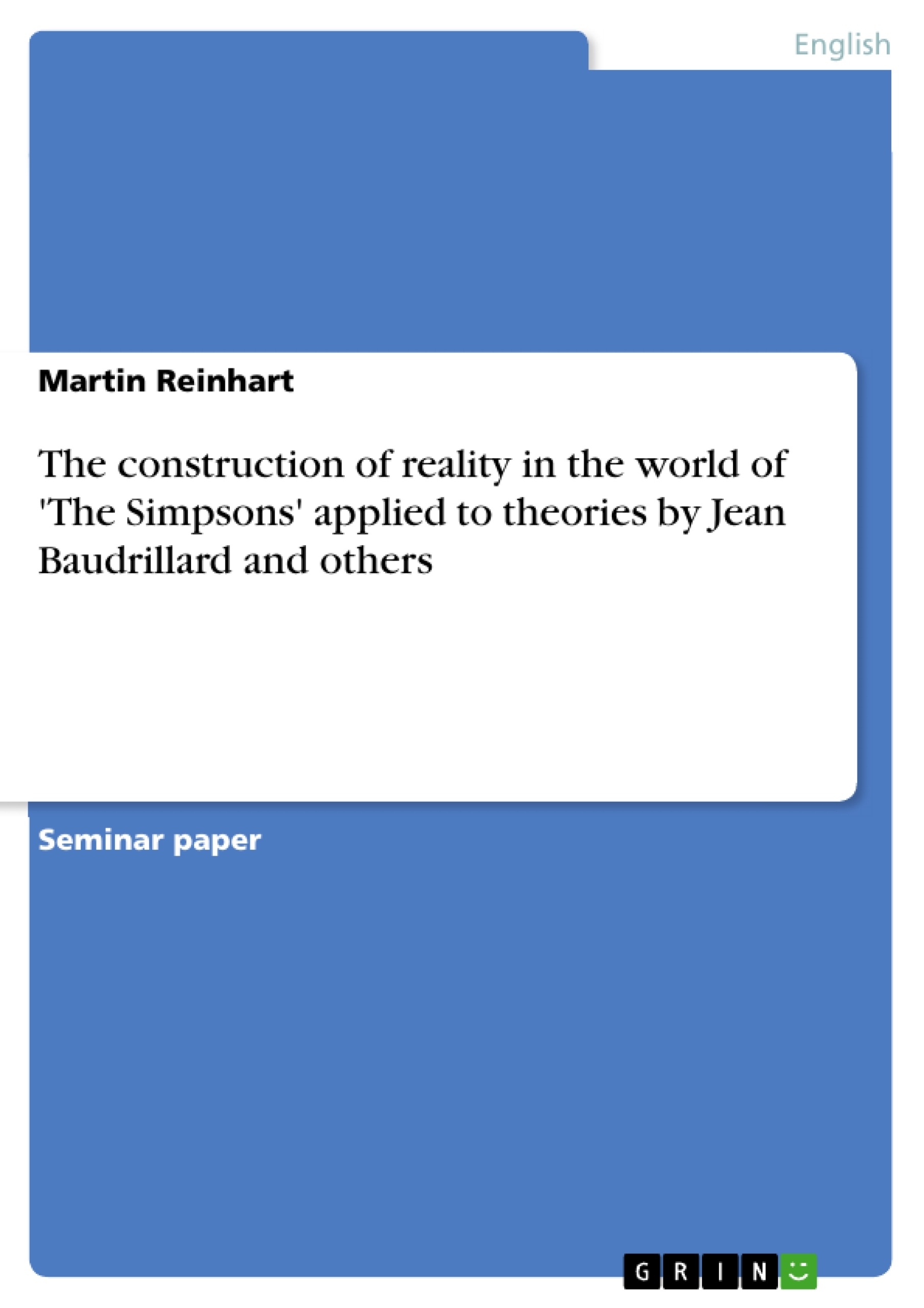Maybe more than any other show on TV, the long-running series The Simpsons qualifies for a scientific analysis. The humanoid, yellow family and all their friends and fellow Springfieldians are citizens of a semi-realistic realization of a standard American city. As this paper will try to outline later on, there are incredibly many allusions to other pieces of art integrated within most of The Simpsons episodes. This paper will look at how this is done and why it works even if the spectator does not even realize these intertextualities. Moreover, it will try to apply some thoughts of the (literary) theories of Jean Baudrillard and Karlheinz Stierle to the setup of The Simpsons and thereby outline the depiction and structure of different realities or different levels of reality within the series.
Inhaltsverzeichnis (Table of Contents)
- Introduction
- The underlying theories
- Jean Baudrillard – Simulacra and Simulations
- Karlheinz Stierle – Die Fiktion als Vorstellung
- The construction of the world of The Simpsons
- Conclusion
- Bibliography
Zielsetzung und Themenschwerpunkte (Objectives and Key Themes)
This paper aims to apply postmodern theories, specifically those of Jean Baudrillard and Karlheinz Stierle, to the popular animated TV series The Simpsons. It examines how the show constructs its own reality, blurring the lines between fiction and real-world experiences. The paper will explore the intertextualities within the show, the impact of media on society, and how The Simpsons reflects American culture and values.
- The blurring of the lines between fiction and reality
- The role of media in shaping perceptions and influencing society
- The construction of reality through simulations and simulacra
- The relationship between pop culture and everyday life
- The Simpsons as a representation of American society and culture
Zusammenfassung der Kapitel (Chapter Summaries)
The paper begins with an introduction that explores the concept of reality in the postmodern era, drawing upon Baudrillard's ideas about the disappearance of the real and the rise of simulations. The second chapter focuses on the key theoretical concepts that will be used in the analysis of The Simpsons, providing a brief overview of Baudrillard's "Simulacra and Simulations" and Stierle's "Die Fiktion als Vorstellung."
Schlüsselwörter (Keywords)
The central keywords of the text are reality, simulation, simulacra, postmodernism, intertextuality, The Simpsons, Jean Baudrillard, Karlheinz Stierle, American culture, media, pop culture, and societal influence.
- Quote paper
- B.A. Martin Reinhart (Author), 2011, The construction of reality in the world of 'The Simpsons' applied to theories by Jean Baudrillard and others, Munich, GRIN Verlag, https://www.grin.com/document/187317



